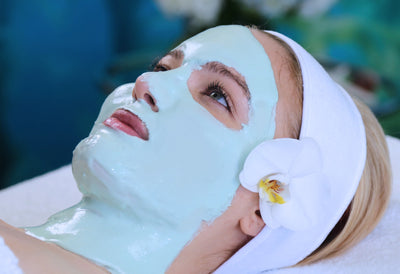Skin Care after Microneedling
This procedure, also known as collagen induction therapy, is a process involving repetitive puncturing of the skin with sterilized microneedles. The proposition is that the trauma generated by needle penetration in the skin induces regeneration of the dermis.


However, while microneedling is a common procedure, many people are not aware of the importance of aftercare following treatment. Here, we’ve gathered advise from leading experts in the health/beauty field, Lydia Sarfati, CEO and Founder of Repêchage Skin Care, pioneers of sustainably-harvested, seaweed based skin care, and Natalya Fazylova, DNP of ReBalance Integrative Medicine and Anti-Aging Center in NYC.
Proper post-procedure care is not only important to help restore the essential skin barrier after the invasive procedure, but can help maintain the results. According to Dr. Fazylova, “I see a lot of practices and procedures failing because of improper follow up. I could do whatever I can do during the process but it that person is not doing what needs to be done when they get home, half of the success of the procedure is gone.”
Microneedling is a procedure where needles penetrate the stratum corneum and create small holes known as micro-conduits with minimal damage to the epidermis. The theory is that by breaking collagen strands in the superficial dermis, this leads to the generation of growth factors which stimulate the production of collagen and elastin in the papillary layer of the dermis.

A topical anesthesia is applied to the treatment area about 45 minutes to an hour before the procedure begins. The skin will be numb during the treatment, which takes about 30 minutes to complete.
But, as Dr. Fazylova points out, it’s not one size fits all for the procedures. In most cases, skin is infused with skin treatment “cocktails” at the time of the procedure, based on the problem being addressed.
“We combine this with specific techniques and topical ingredients depending on the skin type,” explains Dr. Fazylova. “We have a specific cocktail for acne patients, for example, as well as for someone who is concerned about wrinkling around the eye area. There’s a totally different procedure that needs to be done for those suffering for rosacea.”
Because this is an invasive procedure, Dr. Fazylova reminds us that having microneedling performed in a medical environment is important to make sure it’s sterile, performed by a qualified medically trained technician and to be sure that they are following the correct protocol that corresponds to the skin concern. These professionals also need to follow up with proper home care advice.
In general, skin irritation can be expected for the first day or two after the micro-needling procedure. Patients will also see some redness in the skin over the first two or three days.
Follow your medical skin care professional’s advice for a skin care regimen immediately following the procedure, as well as consult on the appropriate time to resume a mild skin care program after this healing period.

According to Lydia Sarfati, at that time, redness can be addressed by using a soothing sheet mask that contains moisturizing and calming ingredients such as Seaweed extract combined with skin softeners such as Allantoin, Aloe, Hyaluronic Acid and Mirabilis Jalapa extract to bathe skin in moisture while it helps to soothe the appearance of the skin.
In the weeks that follow, use a mild, gentle skin care regimen that works to help restore compromised skin such as the new Repêchage Hydra Dew Pure™ Collection.
Using a chemical free skin barrier cream daily is essential to compromised skin after Microneedling. Mineral Face Shield® is a water-free cream that contains no oils or fragrance and is formulated with 40% Zinc Oxide to create a barrier from environmental aggressors such as pollution and free radicals.

Need to know more about post-procedure skin care treatments? Let us know in the comments.
* Independent Lab study, NYC 2020
**This blog is for informational purposes only and is not intended as medical advice, diagnosis or treatment. Always seek the advice of your doctor or qualified health provider with any questions or concerns you may have about a medical condition or treatment and before beginning any medical treatment.













